Beginner motorcycles for tall riders
Updated on | By Mohit Chauhan

It’s no secret that most motorcycles, like clothing, are designed for customers of average height. And just like clothes, if you decide to purchase a motorcycle that does not fit, it will end up collecting dust outside your house rather than being used for its intended purpose.
Choosing the right motorcycle can be hard, especially for tall riders who seek additional room for their legs. On many motorcycle forums, you can find a lot of topics and messages where enthusiasts of large built ask like-minded people which model might suit them. After all, there is no motorcycle dealership store called ‘Big and Tall’.
It all comes down to the so-called “rider’s triangle” – this is the position of the fifth point of the rider, his arms and legs relative to each other while on a motorcycle.
On a sport bike, the rider’s triangle is tilted forward with the arms low and the driver’s feet pushed back under the seat. On a standard motorcycle, the triangle points upward, with the rider’s arms slightly higher and the feet below the elbows. Cruisers, of course, have the most imposing and relaxed seating position: hands above the knees and legs extended forward so that the rider can lean back.
A taller biker can better customize an existing bike in several ways. A taller handlebar and a forward-facing foot control will help best, but if these extras are too expensive for you, there are more options. Some mounts allow you to adjust the position of the handle bar and move it forward a little, and additional leg supports and foot pegs allow the tall rider to stretch their legs more.
Tools like Motorcycle Ergonomics Simulators are of great help while choosing a motorcycle, as they give you an idea of how a particular motorcycle will suit a rider of average height. While compiling our list, we were guided by this tool as well. However, the best way to find a motorcycle that suits your physique is to try it on; make sure you visit as many dealerships as possible and sit on as many bikes as possible.
Many tall riders, especially beginners, face the challenge of choosing their first motorcycle. But why is this even more challenging for beginner motorcyclists? Because many people prefer to buy inexpensive and moderately powered engine as their first motorcycle, but since the engine power usually correlates with dimensions, most budget motorcycles, especially the category of 400 cubic centimeters of volume so beloved by beginners, turn out to be corny uncomfortable for tall riders.
For a start, perhaps it is worth deciding which class of motorcycle you want to drive. For example, top tier enduros like the Honda XR, Yamaha TTR, or Suzuki DRZ may be too small for a tall person, despite the rather high saddle height. The same applies to the motard class or the Supermoto. But adventure tourers are very much loved by tall riders, since most of these bikes are distinguished not only by their high riding position, but also by their solid size. Keep reading further to know the best beginner motorcycles for tall riders.
Top 3 Motorcycles for Tall Riders

BMW G310GS
The smallest naked G310R in the BMW motorcycle range has become a true bestseller. Good looks, modern design and a premium nameplate literally forced buyers around the world to give their money to dealers of the Bavarian brand. But BMWs would not be BMWs if they ignored the rapidly growing wave of interest in small-volume crossovers. So, on the basis of the successful road builder, the younger “Goose” appeared – G 310 GS. The G310GS is powered by a 313cc, single cylinder, 4-stroke, 4-valve water cooled engine that produces a combined power of 34 HP at 9250 RPM and a combined torque of 28 NM’s at 7500 RPM. The layout of the motor is not quite usual; the inlet is at the front of the unit and the outlet is at the rear. This made the exhaust system shorter and lighter. There are no hot pipes on the side of the motorcycle, which is, firstly, pleasant during traffic jams, and secondly, is safer if the bike falls on its side.
The design of the motorcycle can be classified as “standard”; a minimum of plastic, no glass, comfortable fit with a fairly high handle bar, and a curb weight of just 158 kilograms. The standard seat height is 785 mm, and can vary from 770 mm (for the optional low) to 800 mm (for high comfort). This means that big riders will have enough room for their legs and their body to fit around this bike. With an overall height of 185 cm, it is quite comfortable to wrap your knees without any hindrances. The seat itself perfectly holds the rider in place thanks to the pronounced support at the back. The kickstand can be easily adjusted with your foot using a special lug that is found on every BMW bike.
BMW Motorrad, the motorcycle division of the BMW concern, produces very good motorcycles and has a huge range of models. For example, the S1000RR is one of the best sports bike in the world, and the R1200GS is an icon in the Adventure class and the most ideal bike for tall riders in its segment. Almost all motorcycles are designed and manufactured in Germany, at the plant in Berlin. A new line of small G bikes that has entered the market is designed by BMW but made in India. For BMW, this opens up two opportunities at once – to offer a very affordable price for a new circle of riders and to enter the Asian market, where a motorcycle is not a toy for the season, but the main means of transportation, and the lion’s share of sales here falls on small-cubic models. By the way, the Harley Davidson with the Street line and the KTM with the 390 Duke followed the same path. In the case of KTM, Indians own almost half of the Austrian company.

Yamaha XSR700
The Yamaha XSR700 factory scrambler appeared in 2016 as the successor to the 1976 Yamaha XS650 and one of the Ducati Scrambler rivals. In fact, this is the same MT-07, but in a different wrapping; the frame, engine, chassis and brakes are all alike on the Yamaha MT-07. The main target audience of the Yamaha XSR700 are big riders who prefer classic road bikes with retro styling elements.
Also noteworthy is the fact that the model is a production version of the “Faster Sons” custom (based on the Yamaha MT-07) presented by Master Shinya Kimura from Los Angeles.
The main feature of the Yamaha XSR700 is the 689cc inline 2-cylinder engine that outputs around 75 HP of power and 68 NM’s of torque. Thanks to the use of a 270° crankshaft, the character of the motor is similar to that of a V-engine. The Yamaha XSR700 features a steel tubular frame, simple telescopic forks and monoshock suspensions, 4-piston front brakes with ABS, 14L aluminum fuel tank, 835 mm seat height, and 186 kg curb weight.
The Yamaha XSR700 is marketed primarily for the European and North American markets, but the model can be found in other parts of the world as well.
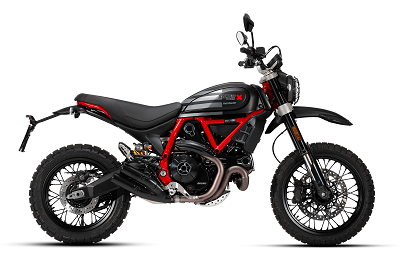
Ducati Scrambler Desert Sled
Retro bikes are still at the peak of popularity, from the British Triumph to Japanese Kawasaki; specially trained designers study retro models and create classic motorcycles with modern fittings. And the main thing that pleases in the current wave of retro motorcycles is that, for all their visual ‘old schoolness’, they come equipped with all the modern technologies. Of course, the Ducati Scrambler Desert Sled is hardly a true rally bike, but it does have a few things in stock.
The fully adjustable fork and monoshock with adjustable preload and rebound damping from Kayaba have 20cm of travel, and with 23cm clearance, you can safely conquer difficult places without the risk of wiping a hole in the crankcase. Off-road, of course, 21 inch wheels would be more appropriate, but the spoked 19/17-inch wheels are tried and tested touring enduro kit, comfortable both off-road and on asphalt.
The Desert Sled is a comfortable and easy-to-handle motorcycle. For those tall riders who prefer enough leg room space, the tall 860 mm saddle can prove ideal. The clutch is light, the gas is smooth, the engine does not stall at low revs; truly a beginner’s dream. It easily allows you to perform all kinds of parking stunts such as wheelies, turns with drift, and so on. On the road, the Sled is pleasant, fun and relaxed motorcycle. The 73-horsepower engine won’t blow you to the moon, but it is quite capable of delivering you where you need to be quite comfortably.
Beginner Cruiser Motorcycles For Tall Riders
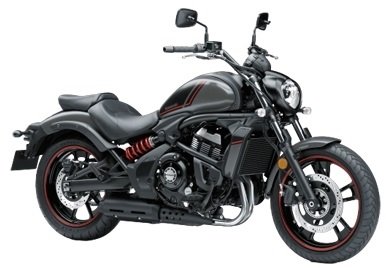
Kawasaki Vulcan S
The Vulcan S is more than just a cruiser. Standing alone with its in-line 2-cylinder 649 cc engine (delivering 61 HP of power and 63 NM’s of torque), steel diamond frame, disc brakes front and rear (versions with ABS), electronic fuel injection, 6-speed gearbox, chain drive to the rear wheel and fuel tank of 14 liters.
The motorcycle was based on the engine from the Kawasaki ER-6 and Kawasaki Versys 650, which was slightly reconfigured (reduced maximum power, increased torque characteristics in the low and mid-speed zone) and placed in a steel diamond frame, giving an overall appearance similar to Harley Davidson V rod.
In general, the concept of Kawasaki Vulcan S is to offer the market a motorcycle with a brutal appearance, reminiscent of the design of power cruisers, but in terms of equipment and character comparable to the usual modern road bikes (light weight, comfortable fit, medium-volume engine, good dynamic characteristics, and economical).
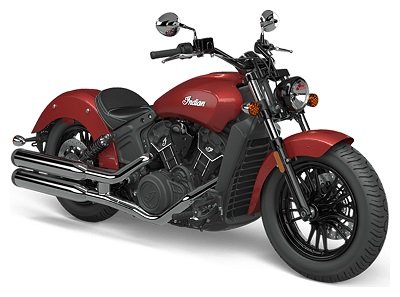
Indian Scout Sixty
In the wake of the success of Scout and Scout Sixty, Indian motorcycles slightly revamped their affordable bikes to target younger audiences.
Introduced in 2015 after more than a decade, Indian scout has glorious roots as far back as the 1920s. Larger than a cafe racer, but smaller than a full-size cruiser, the Scout is something in between – what Indian calls a “mid-size” cruiser, and some call a bar-hopper (a motorcycle for moving between bars, i.e., for short distances, by analogy with cafe racers and as opposed to large cruisers which travel long distances).
Beneath the distinct urban design is the 999cc Scout Sixty V-twin, which hasn’t changed at all for quite a while, because it’s already good. The engine is immediately tuned for a smooth power curve and pulls superbly from the low end. It produces 78 HP and 88 NM as per specs (and 68.2 HP at 7,000 RPM and 77 NM at 5,900 RPM when measured on a dynamometer).
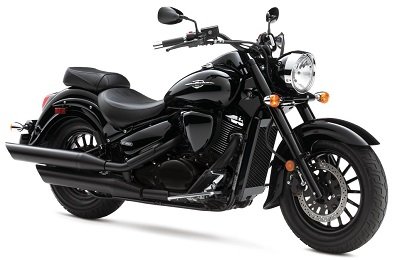
Suzuki Boulevard C50
The Suzuki Boulevard C50 is a typical representative of the mid-range cruiser class. Within the circle of motorcyclists, it is also known as the Intruder C800. The bike was born from the merger of three motorcycles: Desperado, Intruder and Marauder. The Boulevard C50 has a lot in common with the VL 800 Intruder Volusia; in fact, it is its logical continuation, but only more modern and improved.
The rider’s seating position is high, which is ideal for tall bikers, but due to the large headlight, the oncoming air flow is directed in the middle of the chest and may require an additional windshield. The wide handlebar allows you to keep your hands in a comfortable position for maneuvering in the city and at the same time at high speed does not let the biker to sail with the wind.
The heart of all Suzuki C50 models is the liquid cooled 2 cylinder V-engine. Its volume reaches 805 cubic meters, and the camber angle of the cylinder block is 45 degrees.
Auto Fast Idle System provides instant engine start. Getting off the bike is just as easy as accelerating, releasing the clutch, or shifting gears.
Suzuki’s Dual Throttle Valve technology ensures optimal air and fuel delivery regardless of road conditions, contributing to a smooth ride and excellent throttle response. C50’s handling is also good; taxiing is easy even at high speed and allows you to change from row to row without any problems.
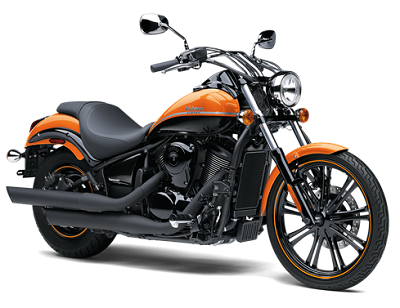
Vulcan 900 Custom
Firstly, the bike is very big. The huge engine gives an idea of how powerful this bike is. The wide wheels provide the confidence of good traction and safety when cornering. Also noticeable is the powerful front fork that provides comfort when riding on uneven roads. Secondly, for all the bulkiness and volumetric shape of the motorcycle, the manufacturer was able to add small details that logically complete the appearance of the motorcycle. The turn signals and the rear brake light are very well located. And the monotonous color is diluted with chrome inserts.
The Vulcan 900 Custom is simple and tasteful; there is nothing superfluous in its exterior that could distract you during the trip. But at the same time, everything stands in its place – which is why the motorcycle gives only positive emotions. The 903cc engine not only looks like a large V-twin, but also has throttle response and great acceleration in the style of much more powerful bikes. It delivers powerful traction from 0 to 50 mph and is capable of surpassing any other motorcycle in its class in acceleration dynamics in the mid-range. Its traction is linear, and more luscious on the low end than you would expect from a short-stroke four-valve engine. Reaching 78 NM at 3500 RPM, it provides an accessible acceleration reserve at any time, even on city highways. It also shows excellent stability on the highways, and the narrow Dunlop does not fidget on the pavement, which is impressive. At the same time, it does not turn the rider into a sail, which is also good.
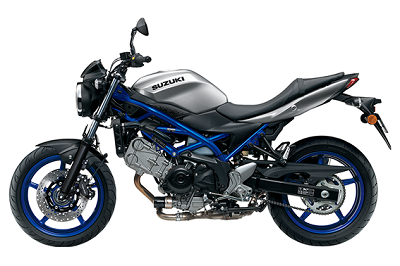
Suzuki SV650
The Suzuki SV650 series of road motorcycles appeared on the market in 1999 and was focused on the markets of Europe, North America and Australia. For the domestic Japanese market, a 400 cc modification was proposed; the Suzuki SV400.
The SV series was driven by Suzuki’s desire to gain export market share by offering a cheaper competitor to the Ducati brand. The past experience of the TL1000 had shown that there was a fairly high demand for such motorcycles and a certain “army” of fans. Thus, 2 modifications of the SV650 series were proposed: naked and sports. Towards the end of production, a full-fledged sports modification appeared, featuring a full plastic body kit.
Suzuki SV650, a regular naked version existed from 1999 to 2009, whereas, Suzuki SV650S, a sports version, existed from 1999 to 2012.
Suzuki SV650SF (Sport) was a full-fledged sports version that existed from 2008 to 2009.
The Suzuki SV650 series was based on a 2-cylinder V-shaped (90 °) liquid-cooled engine with a volume of 645 cm³, producing 65 HP to 72 HP. Due to the characteristic forward lean of the engine, it visually resembles Ducati engines, often referred to as L-shaped engines. Since 2003, the engine has received an injection power system, and since 2007; two spark plugs per cylinder.
Among the key features of the SV650, in addition to the engine are an aluminum frame, a simple suspension in the form of a conventional telescopic fork in the front and a monoshock at the rear, simple 2-piston front brakes (versions with ABS are available since 2007), an injection power system (since 2003) with double throttle valves SDTV, a 17 liter fuel tank (since 2003), and a 6-speed gearbox.
Adventure Touring Motorcycles for Tall Riders
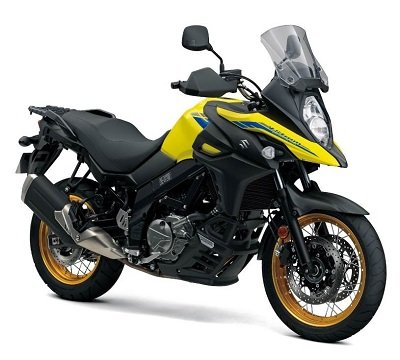
V Strom 650XT
The Suzuki 650 V-Strom adventure touring motorcycle was first introduced in 2004 and is still in production today. The model is the “younger brother” of the flagship version of the Suzuki DL 1000 V-Strom, and shares a number of common parts with it. It is built by redesigning the engine of the naked Suzuki SV650. The main differences between the V-Strom 650 engine and the SV650 are their camshafts, a crankshaft with an inertia increased by 4%, a slightly modified filter box and an exhaust. Also, unlike the SV650, cast iron block of 650XT is built on the patented SCEM (Suzuki Composite Electro-chemical Material) technology, using an alloy of nickel, phosphorus, carbide and silicon for lighter weight, improved heat transfer and minimal piston-to-cylinder clearance.
The Suzuki 650 V-Strom engine is a 2-cylinder V / L-shaped liquid-cooled block, with a volume of 645 cc, outputting a combined power of 63 HP.
This multi-modded motorcycle with a well thought-out concept has a lot to offer. The V-Strom’s biggest advantage is its versatility. The motorcycle is compact and light enough that even beginners can handle it really well. As they wind the wheels for miles, they will surely find that the V-Strom 650 does not get tired even on long journeys. It allows dynamic cornering, is economical, and really cheap to maintain.

KTM 790 Adventure R
Although KTM successfully sells V-twin LC8 models such as 1090 Adventure R, there is a fairly large subculture of hard core enthusiasts who consider the 950 and 990 Adventure to be the only proper off-roader. Luckily, KTM has something for them too. We are talking, of course, about the 790 Adventure and Adventure R.
KTM 790 Adventure and 790 Adventure R are positioned as the next hard core touring adventure designed for really tough driving conditions. This touring enduro is the second model to be based on the new LC8c engine. 799cc inline-twin with eight valves and two overhead camshafts structurally follows the engine of KTM Duke 790, but gets a typical off-road character and power distribution. Camshaft profiles are optimized for traction at low and medium RPM, and KTM claims the same 88 NM as Duke, but if the latter has maximum torque at 8000 RPM, then Adventure has 6500 RPM.
KTM positions the LC8c engine as the most compact high-performance inline-twin on the market, resulting in a tighter package and better weight distribution. The LC8c engine is not only compact, but it is also designed to reduce the overall weight of the motorcycle due to the fact that it can be used as a supporting structure. At the moment this engine is being used by Adventure and Duke, but KTM Group has serious plans for the LC8c platform, so we should expect new KTM and Husqvarna models based on these engines.
The list of differences between the KTM 790 Adventure and the Adventure R is short, aside from the suspension. A taller and wider windscreen is fitted to the standard version, while the R has a smaller windscreen. The visors are adjustable, but only with a Phillips screwdriver. The KTM Adventure R features a secured 880mm cross saddle, and the standard version has a height adjustable split saddle (830 and 850mm). And if you are really big rider, the adjustable saddle can be fitted to the R, obtaining 860 mm in the lower position.

BMW 1250GS
The new BMW R 1250 GS is equipped with an enlarged engine with a displacement of 1254 cm³, which replaced the old power plant with 1170 cubic meters. The motor produces 136 HP of power at 7250 RPM’s and develops a torque of 143 NM’s at a shaft speed of 6250 RPM. This is 11 HP & 18 NM’s more than its predecessor.
The front suspension of the BMW R 1250 GS is based on the well-known 37mm BMW Telelever central spring strut, which provides good handling and prevents “pecking”. The rear swing arm is a cast aluminum single-tube fork. The load compensation system is fully automatic, unlike the previous version where a semi-automatic electronic suspension was used. Front suspension travel is 190 mm and rear suspension travel is 200 mm.
The wheels of BMW R 1250 GS are made of aluminum alloy. At the front, 120/70 R19 tires are used, and a wider 170/60 R17 tire is installed at the rear. It provides high-quality traction on the track, and improves stability. For braking, the bike uses dual discs at the front, 305 mm in diameter, with floating 4-piston calipers. A single disc with a diameter of 276 mm is installed at the back, along with a floating caliper with 2 pistons.
The dimensions of this motorcycle are usual for this class of technology. The length of the bike is 2207 mm, the wheelbase is 1525 mm, and the width is up to 952 mm. Moreover the unloaded seat height is 870 mm, which is quite comfortable for tall riders. Due to its enormous engine, the BMW R 1250 GS is quite heavy, its curb weight reaches 249 kg, and its payload is up to 216 kg. The fuel tank holds 20 liters of fuel and the gas consumption on the highway is 4.75 liters per 100 kilometers, so the capacious tank allows you to make long trips without refueling at every gas station.
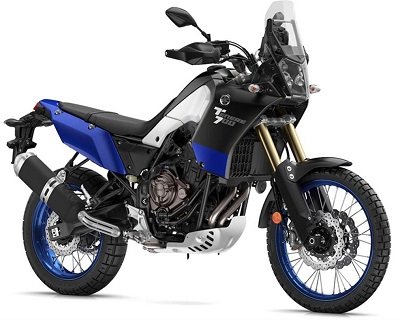
Yamaha Tenere 700
The Tenere, as it stands today, has a long and interesting history that began in 1982 at the Paris Motor Show where the XT600 Tenere was shown. The first Yamaha Tenere was based on the XT500 rally model and followed the growth trends in the speed and size of rally bikes of the time. The development was led by Jean-Claude Olivier, who in those days not only participated in Paris-Dakar himself, but also worked in the company Sonauto, which represented the interests of Yamaha in France, and then was appointed to the position of Yamaha Motor France.
The word Tenere comes from the North African languages; Berber and Tuareg, and means “Desert” and “Wilderness” at the same time. Yamaha chose this name for the Sahara Desert region that stretches across Niger and Chad and was part of the original Paris-Dakar Rally route. The vast dry sandy area was infamous for its early rallies for its sandstorms and challenging terrain.
With a short 1590mm wheelbase and slim body, this sturdy chassis provides good handling. And with a ground clearance of 240 mm, the Ténéré 700 is capable of conquering any challenging terrain. The Ténéré 700 is equipped with a flat seat and slim body for maximum maneuverability. The compact body structure and narrow fuel tank also allows big riders to grip the tank with their knees while sitting or standing, giving added confidence and control in any situation, be it mud or asphalt.
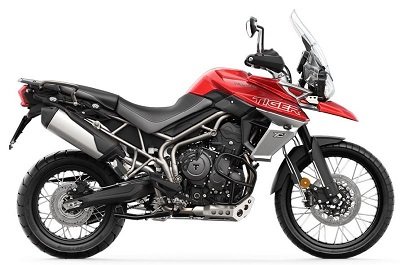
Triumph Tiger 800
Tiger 800 is a dual-sport motorcycle known for its powerful 800cc three-cylinder engine. The Triumph Tiger 800 XC and XR are part of a long family tree that began with winning the Tigers Gold Medal at the 1936 International Six Day Trial. The Triumph was the motorcycle of choice for both British winning teams and famed racer Steve McQueen in 1964. Decades later, the story continues with a new generation that takes the capabilities of the Tiger to a whole new level.
The weight optimized 800 cc triple cylinder now delivers faster power delivery and a maximum power output of 94 HP. Shorter gear ratios improve traction, responsiveness at low speeds, and faster acceleration. In addition, the new Off-Road Pro Ride Mode on XC models allows the advanced rider to take complete control of off-roading.
Each new Tiger 800 represents a huge leap forward in technology: full color TFT instruments, up to six driving modes, high-performance Brembo front brakes, optimized suspension configurations, handle bar switches with elegant illuminated buttons, full LED lighting, revamped cruise -control, improved chassis and first-class bodywork. You also get ABS, traction control, throttle, cruise control, heated seats and grips, and seat height in two positions (810-830 mm on XR models, 840-860 mm on XC models) that are adjustable up to 20mm to suit the riding style of tall riders depending on the terrain.
Beginner Sports Bike for Big Riders
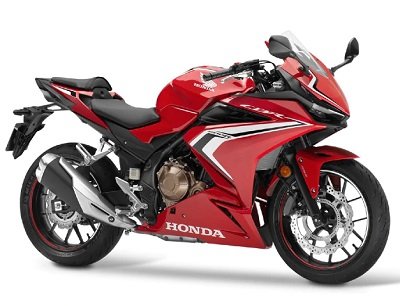
Honda CBR500R
The version of the beginner sports motorcycle Honda CBR500R appeared first in 2013 in parallel with two other models built on a single base – Honda CB500F and Honda CB500X. All three models share a common platform, including the engine, and differ only in design, ergonomics and suspension settings. Otherwise, they are almost identical motorcycles.
The appearance of the Honda CBR 500R was driven by Honda’s desire to offer the market a budget model with a sporty appearance, ideal for beginner riders who are looking for an A2 compliant motorcycle as per European classification. But for those who prefer other types of motorcycle, you can choose a different one – for example, in the “naked” style (CB500F) or the currently popular “touring enduro” (CB500X).
The basis of the Honda CBR500R was taken from an in-line 2-cylinder liquid-cooled engine with a volume of 471 cc, producing up to 48 Horse Power and 43 NM’s of torque. Talking about the features, it has a steel frame, disc brakes (there are versions with ABS), simple suspensions in the form of a conventional telescopic fork at the front and a monoshock at the rear, a second power injection system, a 6-speed gearbox, 785 mm saddle height, and a curb weight of 195 kilo grams.
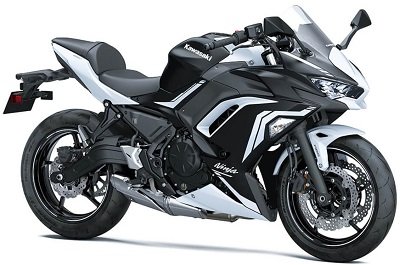
Kawasaki Ninja 650
The version of sports touring motorcycle, Kawasaki Ninja 650, was first introduced in 2021 as a new generation of the ER-6 series, and in particular, the “sports” modification of the Kawasaki ER-6F (aka Ninja 650R). Despite the separation of the motorcycle into a separate model, unlike the previous version, the new Ninja 650 practically did not differ in the technical part; the most important change were the reconfiguration of the engine and exhaust to new environmental standards, due to which it lost 4 HP. In all other aspects, it was practically the same motorcycle. The only major changes were visual improvements; a new look with an elegant dashboard.
The refreshed Kawasaki Ninja 650 instantly catches the eye with an all-new design and frame that makes this bike interesting for a wide range of riders. The bike is a striking representative of its cubature class and, due to the reasonable power of the engine, allows you to focus more on technical piloting than on keeping the motorcycle in check. A modest and quite torquey motor of 67 Horse Power will help the rider to fully immerse in honing his skills!
Every rider has their own imaginary garage full of all kinds of expensive exotic bikes, but the harsh reality is that many of these bikes aren’t always available to riders. Moreover, these are not the bikes the owners can use on a regular basis. But the good news is, the mid-size Kawasaki is well within the reach of many motorcyclists. And this is actually a good choice; it does not require additional expenses for electronic add-ons and has a completely finished image, making it an ideal every day bike.
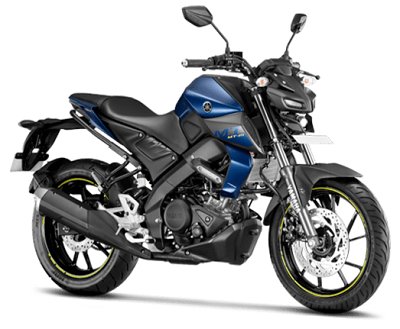
Yamaha MT-09
The naked Yamaha MT-09 model was first presented in 2012 at the Intermot-2012 exhibition, and went into mass production in June 2013. In the North American market, this model is called the Yamaha FZ-09. The main reason for the creation of the Yamaha MT-09 was Yamaha’s desire to compete with the European models Triumph Street Triple and MV Agusta Brutale 800, as well as to have a flagship model in the line of unusual MT motorcycles.
Like all MT motorcycles, the Yamaha MT-09 does not look like the Japanese model in the classic presentation, and this is mainly manifested in the engine – instead of the classic “in-line four”, an in-line 3-cylinder 847 cc engine is used that outputs 115 HP of power and 87.5 NM’s of torque. This choice was due to the fact that such a layout of the engine, according to Yamaha, has the best ratio of power, torque and weight.
By 2021, Yamaha introduced new generations of the MT-09 and Tracer. A seat height of 825 mm on MT-09 and a seat height of 810mm to 825 mm on Tracer 9. The company finally divided both versions, which are positioned on the market as separate models. The updated models received a more modern appearance, a modified engine (from 115 HP to 119 HP) that meets Euro-5 standards, a new frame, swingarm, rims and suspension settings. However, the most important change was the new electronic equipment. In addition to the new generation of YCC-T (electronic throttle) and QSS (Quick Shift System that now supports clutch less shifting not only up but also down), the model received new systems from MotoGP Lift Control System (LIF), Slide Control System (SCS) and Brake Control System. The MT-09 SP modification was additionally equipped with cruise control. Tracer 9 versions received similar changes, as well as KYB electronic suspension (GT versions), full LED optics with Cornering Lights, and a dual color display.




